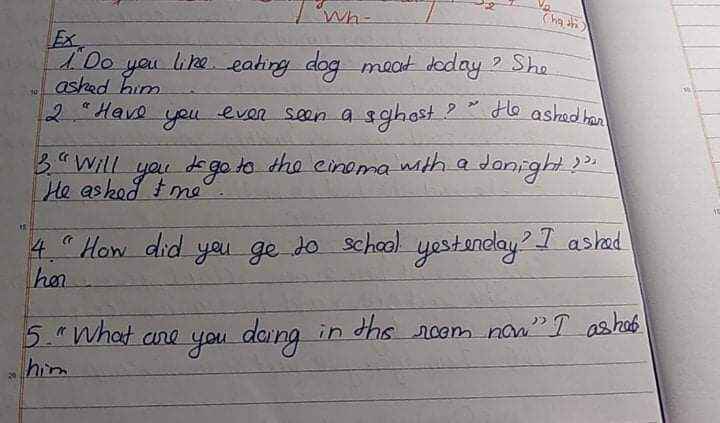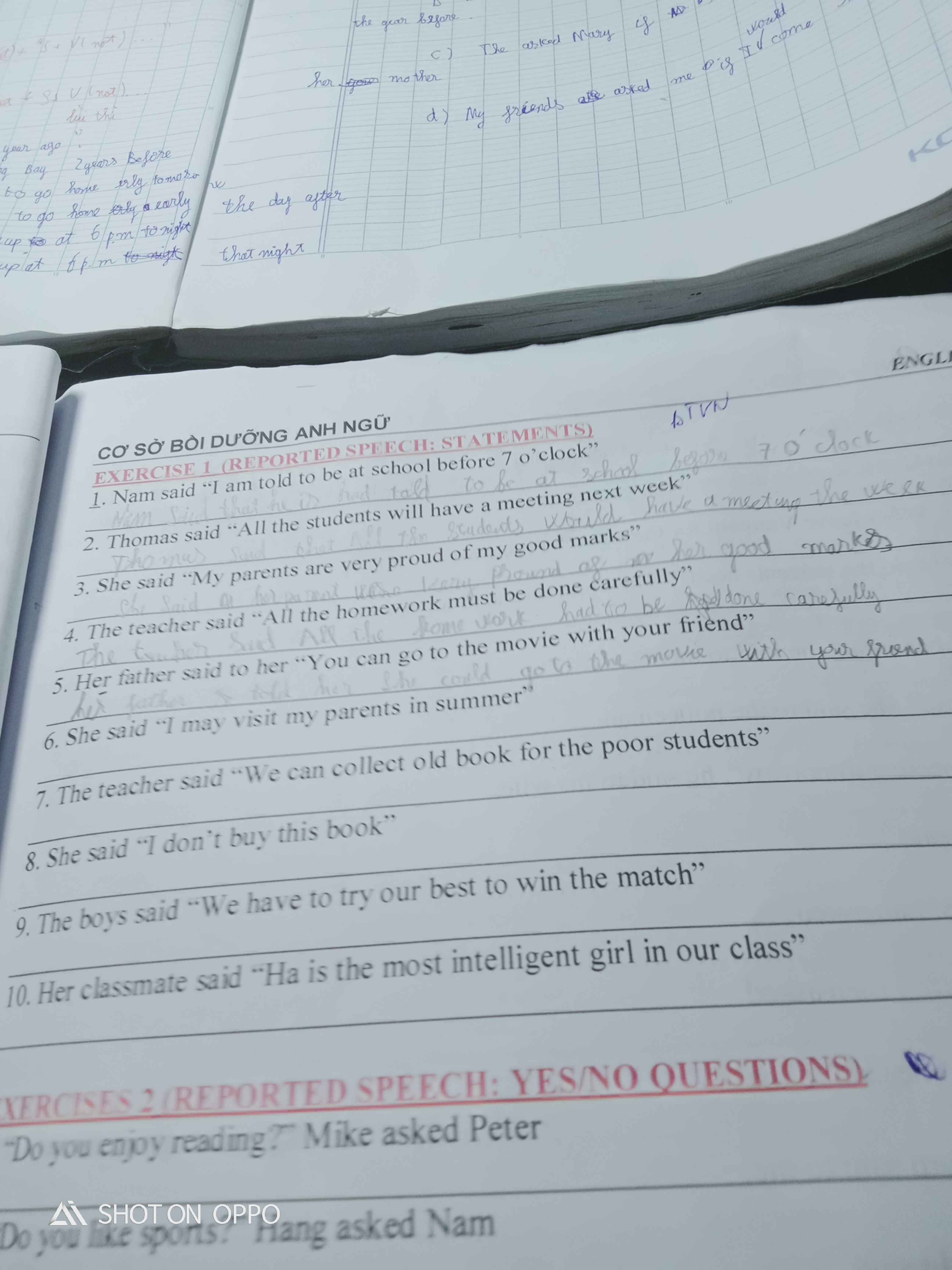I. Khái niệm:
Lời nói trực tiếp (direct speech) là sự lặp lại chính xác những từ của người nói.
Lời nói gián tiếp (indirect/reported speech) là lời tường thuật lại ý của người nói, đôi khi không cần phải dùng đúng những từ của người nói.
II.3 nguyên tắc cần nhớ khi chuyển từ câu trực tiếp sang gián tiếp:
Đổi ngôi, đổi tân ngữ
Lùi thì
Đổi cụm từ chỉ thời gian, nơi chốn
Cụ thể như sau:
Rule (Quy tắc) | Direct speech (Trực tiếp) | Reported speech (Gián tiếp) |
1. Tenses (Thì) | Present simple (V/Vs/es) | Past simple (Ved) |
Present progressive (is/am/are+Ving) | Past progressive (was/were+Ving) | |
Present perfect (have/has+VpII) | Past perfect (had+VPII) | |
Past simple (Ved) | Past perfect (had +VpII) | |
Past progressive (was/were +Ving) | Past progressive/ | |
Past perfect | Past perfect | |
Future simple (will +V) | Future in the past (would +V) | |
Near future (is/am/are +going to+V) | Was/were +going to +V | |
2. Modal verbs | Can | Could |
3. Adverb of place | This | That |
These | Those | |
Here | There | |
4. Adverb of time | Now | Then |
Today | That day | |
Yesterday | The day before/ the previous day | |
The day before yesterday | Two days before | |
Tomorrow | The day after/the next (following) day | |
The day after tomorrow | Two days after/ in two days’ time | |
Ago | Before | |
This week | That week | |
Last week | The week before/ the previous week | |
Last night | The night before | |
Next week | The week after/ the following week | |
5.Subject/Object | I / me | She, he /Her, him |
We /our | They/ them | |
You/you | I, we/ me, us |
III. Cách chuyển câu trực tiếp sang câu gián tiếp
1.Câu trực tiếp ở dạng câu kể/tường thuật:
Câu gián tiếp:
S + | said | that + | Clause |
VD:
“I’m going to visit Japan next month”, she said. → She said that she was going to visit Japan the following month.
“He picked me up yesterday”, Lan said to me. → Lan said to me that he had picked her up the day before.
2.Câu trực tiếp ở dạng câu hỏi
Câu hỏi Yes/No question
Câu hỏi Yes/No question là câu hỏi mà người nghe sẽ phải lựa chọn trả lời Yes/No cho mỗi câu hỏi.
Câu gián tiếp:
S + | asked | if | + Clause |
VD:
“Do you love English?”, the teacher asked. → The teacher asked me if/whether I loved English.
“Have you done your homeworked yet?”, they asked. → They asked me if/whether I had done my homework yet.
Lưu ý: Nếu trong câu trực tiếp có từ “OR NOT” thì câu gián tiếp bắt buộc phải dùng WHETHER
“Does she roses or not?”, he wondered. → He wondered whether she d roses or not.
Câu hỏi Wh-questions
Câu hỏi Wh-questions là câu hỏi bắt đầu bằng từ hỏi Wh- (What, Where, When, Which, Why, How…)
Câu gián tiếp:
S + | asked | + Clause (Wh-word + S + V(thì)) |
VD:
“Where do you live, Nam?”, asked she. → She asked Nam where he lived.
3. Câu trực tiếp ở dạng câu mệnh lệnh (Vinf/ Don’t + Vinf, please)
Câu gián tiếp:
S + | asked/told/ordered/advised/wanted/warned | + sb + (not) to Vinf |
VD:
“Open the book page 117, please”,the teacher said. → The teacher asked us to open the book page 117.
“Don’t touch that dog”, he said. → He asked/told me not to touch that dog.












